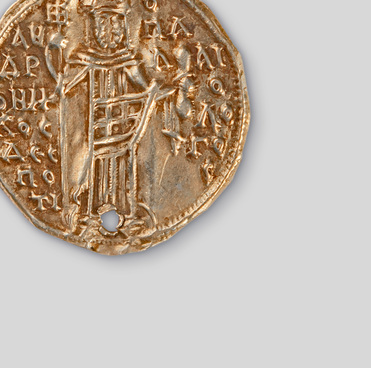The collection of the Ivanovo Museum of Local History named after Dmitry Burylin presents the so-called beard tokens, that is, tokens issued for paying the beard tax in the time of Peter the Great. The obverse of the token features the Russian coat of arms and the year 1705. The reverse side is inscribed with the words “money taken” and has an image of a mustache and a beard.
Such tokens were given to people who paid money to the treasury for the privilege of wearing beards or mustaches. This innovation was introduced under Peter I by the decree of January 16, 1705 “On shaving beards and mustaches for all ranks of people, excepting popes and deacons, on imposing the tax on those who refuse, and on the issuance of tokens to those who paid the tax.” According to the document, all those who did not want to part with facial hair were supposed to pay the tax: merchants were to pay 100 rubles, house servants, service class people, tradespeople and Posad people — 60 rubles; boyar people, coachmen, and servants were charged 30 rubles, while peasants paid 2 dengas every time they entered a city. Members of the clergy were exempt from the tax. In 1715, a single annual tax of 50 rubles per capita was established regardless of class. This amount was quite high: back then, one ruble in Central Russia could buy 218 kilograms of flour, a four-year-old bull, a hundred live chickens, or eight sheep.
The society met the reform with great disapproval. Centuries-old traditions of wearing a beard and mustache proved stronger than the latest fashion and the influence of European culture. This is not surprising, considering that before Peter the Great, shaving a beard was considered a grave sin, and this was even enshrined by the Stoglav Synod of 1551: “The rule of the holy apostles says: if anyone shaves his beard and passes away without it, he is not worthy of a service, of remembrance prayers of the departed, or commemoration with prosphora or candles in the church, for he is a heretic and will be joined with infidels.”
All those who wore beards and mustaches had to have
a confirmation of paying the tax. If a person could not provide one, a fine of
five rubles was imposed. Those who did not pay the tax were punished with a
whip, and those accused of multiple violations were sent to hard labor camps.
The beard tax was formally repealed by Catherine II by the decree of April 6,
1772.



